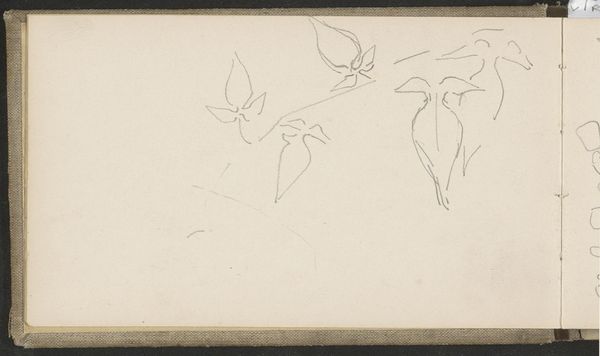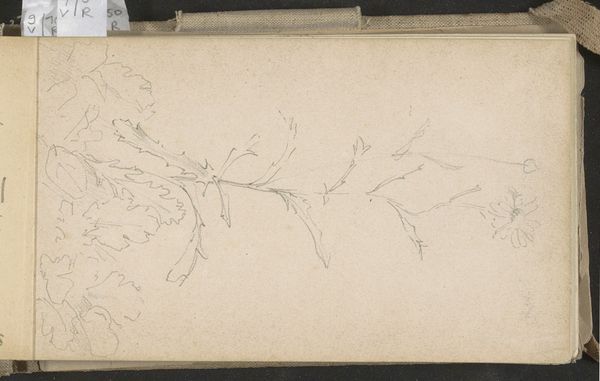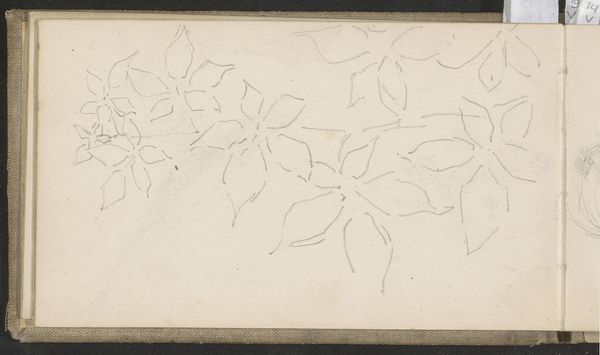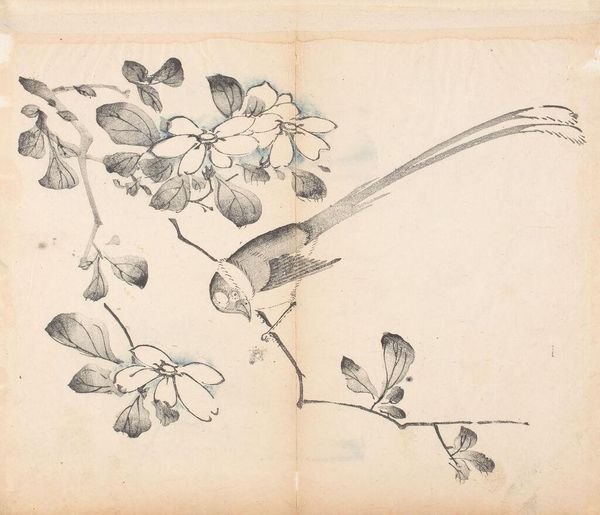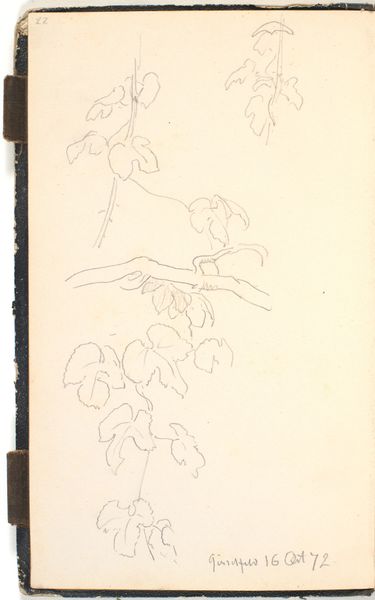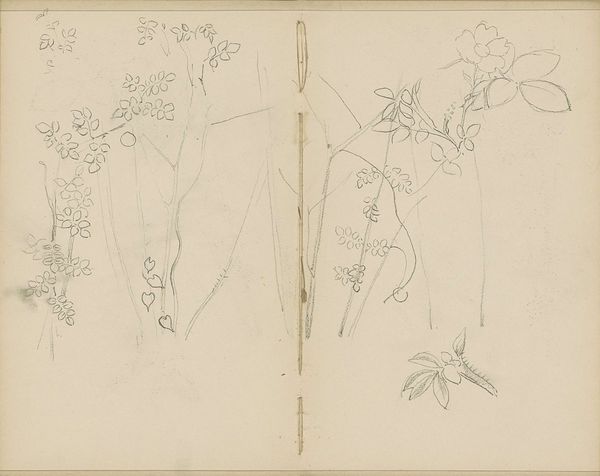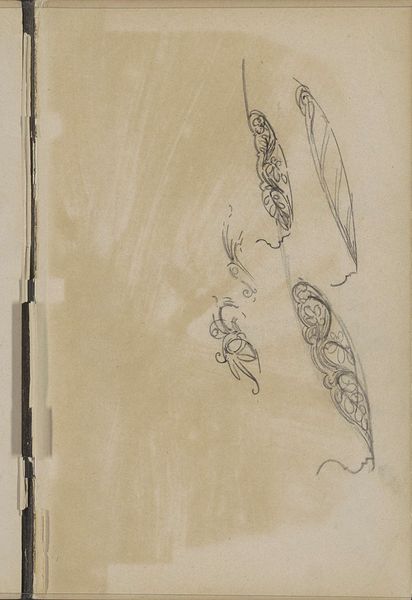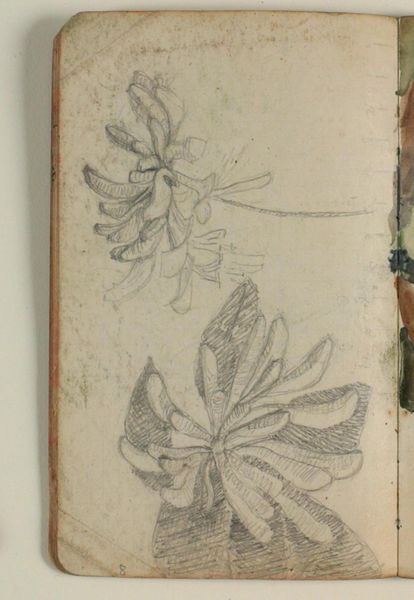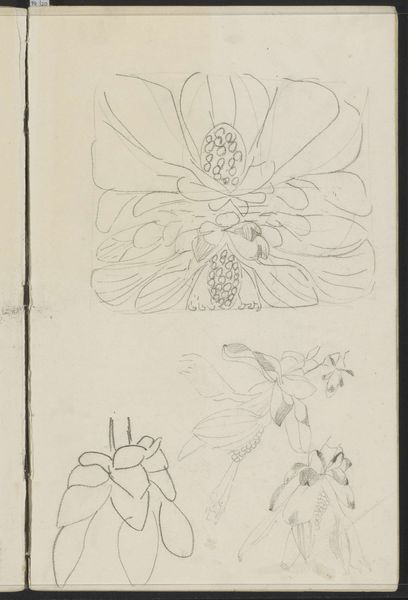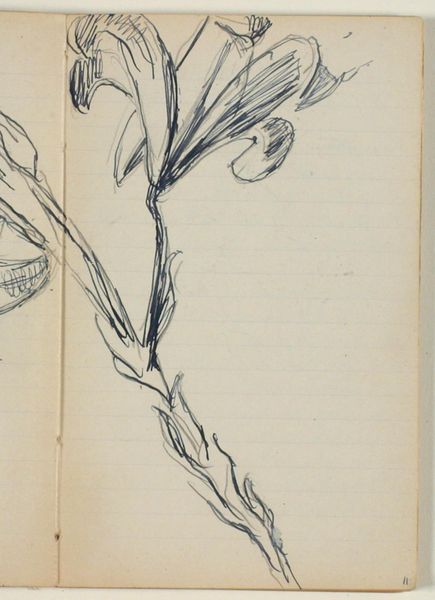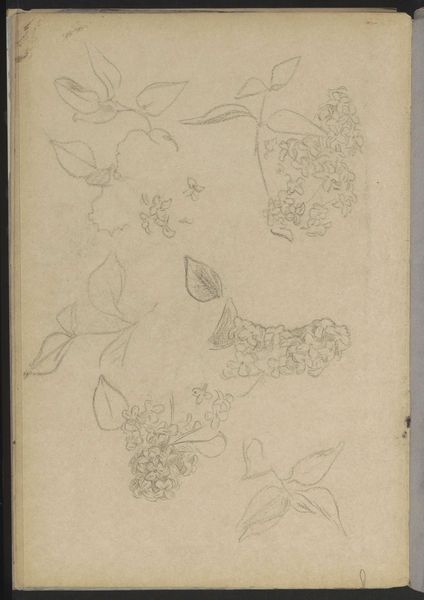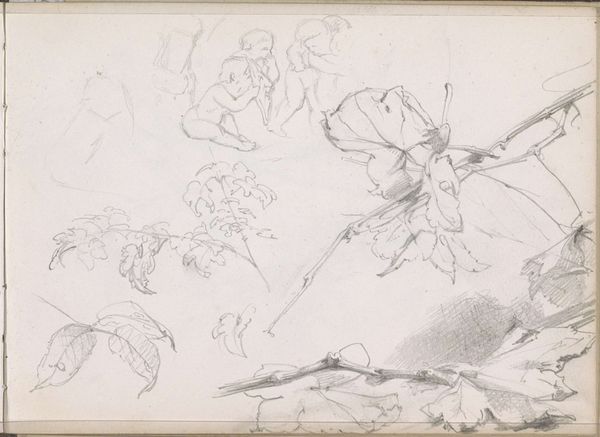
drawing, paper, pencil
#
drawing
#
landscape
#
figuration
#
paper
#
form
#
pencil
#
line
#
naturalism
Copyright: Rijks Museum: Open Domain
Curator: This is a drawing titled “Takken met bladeren”, which translates to “Branches with Leaves”, created between 1892 and 1901 by Antoon Derkinderen. It is a pencil drawing on paper. Editor: There's a delicacy here. It almost feels ephemeral, like the leaves are about to drift off the page. I notice the strong diagonal compositions. Curator: Indeed, Derkinderen focuses intently on the relationships between the forms. The rhythmic arrangements of the leaves, rendered with delicate pencil strokes, create a visual harmony. The lines themselves appear to capture not just form, but the very essence of 'leafness.' Editor: I find it interesting that these branches appear isolated. Was Derkinderen perhaps hinting at the detachment of nature, a theme that gained traction during periods of rapid industrial expansion? These fragile branches, outlined so precisely, could be emblems of ecological concern during the burgeoning anxieties of modernity. Curator: A valid reading. But within Derkinderen's naturalist style, the branches exemplify nature's intrinsic beauty without direct social commentary. His line work achieves a subtle balance between representational accuracy and the evocative power of suggestion. The stark use of the line embodies pure visual form in an exercise of naturalism. Editor: I would still contend that choosing to portray disconnected branches carries implications. Representing leaves in isolation could also speak to societal fractures along race or class. Nature, art, and societal realities frequently become intertwined. Curator: An engaging theory, of course. And there's no reason we can't enjoy it as an elegant study of form and line within its artistic vision. It transcends simple representation through its visual organization and nuanced rendering of form. Editor: Exactly. By engaging with multiple perspectives and acknowledging the complex interaction of art, historical events, and society, we get more in-depth observations on how such renderings come into being and also what they signify. Curator: Yes, the discussion illuminates new layers of analysis—ultimately a new way of looking at art. Editor: A great reminder of art's powerful effect when approached from a contemporary lens.
Comments
No comments
Be the first to comment and join the conversation on the ultimate creative platform.

